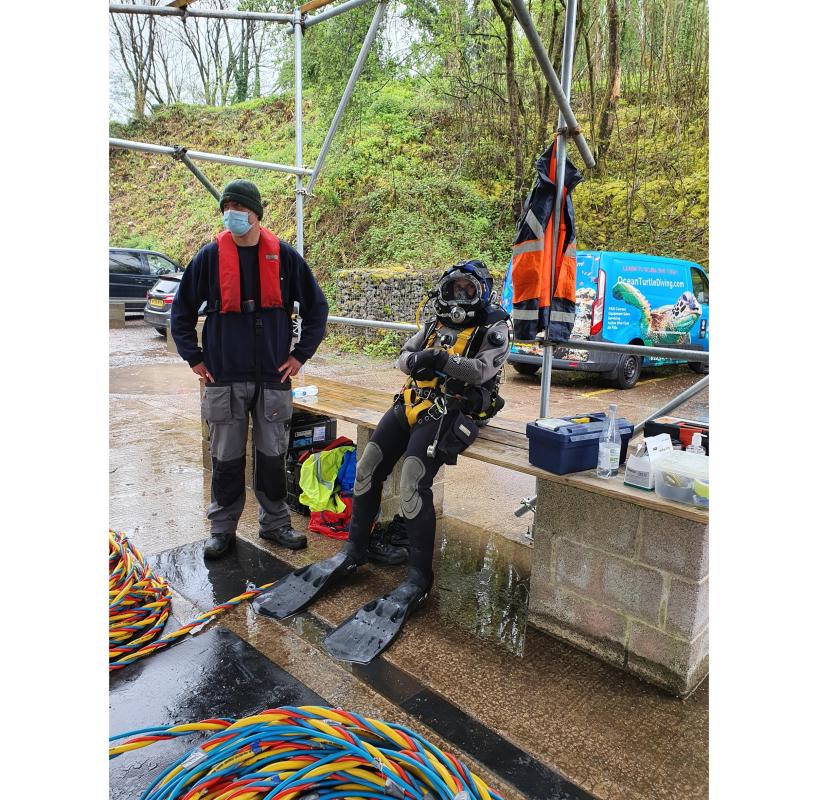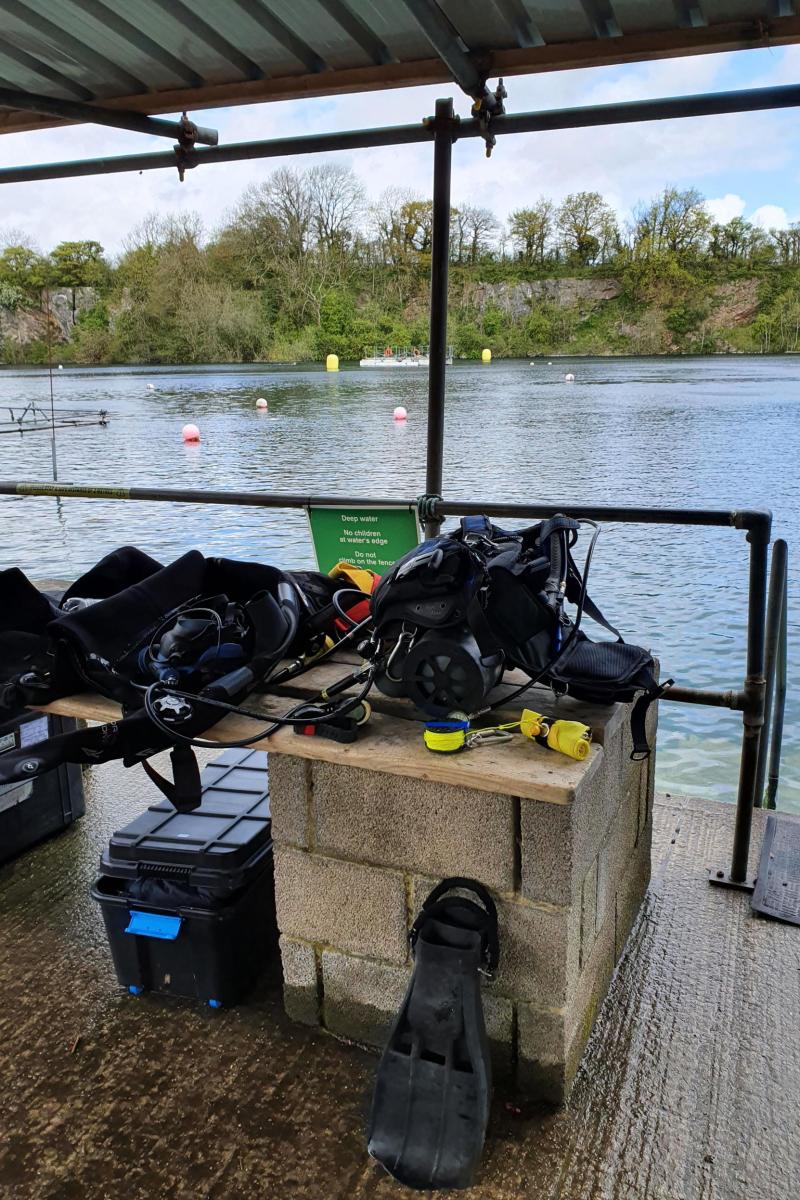Members of the Coastal & Marine team had a great week in May refreshing their diving skills at Vobster Quay; a 36-acre fresh water lake in Radstock, Somerset. The whole week was carried out in a Covid secure manner.
Every year before fieldwork begins, diving takes place in a controlled environment so that the diving equipment can be tested, and everyone can familiarise themselves with procedures and equipment. Wessex Archaeology carries out two types of diving; scuba diving using full face masks and surface supply diving where the divers main air source is on the surface and fed via an umbilical.

Above: Team member Andrea ready for the water in surface supply equipment
I qualified as a HSE Scuba Diver in October 2018 and had not yet dived with the dive team; therefore, the familiarisation day was especially important for me to get accustomed with the types of equipment used by the Coastal & Marine Team. I was excited to get back in the water since before the pandemic started, despite the water only being 10 degrees.
My buddy for the day was Bob and we spent a total of 51 minutes in the water, diving to a maximum of 12 metres while swimming around and practising some drills. As we were in communication with the surface via through-water comms and microphones in our full-face masks, we practised communicating with the surface and carrying out tasks that were asked of us such as switching to our bail out (backup) air, locating and aiding our “unconscious” buddy, locating and unsheathing our knives and deploying a surface marker buoy (SMB) and following it up to the surface. We also had to conduct a safety stop of a few minutes on the way up to the surface to practise in-water buoyancy. Although there are some interesting things to see at Vobster Quay, we were diving on a rocky slope and therefore the most interesting things we saw was a camping stove and frying pan, a toaster and a toilet!

Left: Bob and Lowri tendering two divers
Right: A surface supply diver in the water
During the days where surface supply diving was practised, I was a tender, which is a person on the surface that holds the umbilical of a specified diver. As the supervisor is in constant communications with the divers in the water, on request, we hold their umbilical steady, take in their slack or give them more slack depending on the task or drill being carried out under water. Surface supply diving is used when sites are deeper as it allows more time underwater for the diver. Having a constant connection with the surface is also very useful when visibility is low, or a site is potentially more hazardous.
Rescue drills were also successfully carried out throughout the week to simulate the locating, recovery and assistance of an unconscious diver underwater and on the surface as well as the use of Oxygen on dry land.

Above: A successful day's diving
Diving facts:
A common misconception is that we breathe oxygen from the cylinders on out back. It is actually just air, although slightly purified. Oxygen is only used in emergency situations on the surface.
Diving in fresh water is completely different to diving in salt water. You are much more buoyant in salt water because it is denser and therefore you need to carry more weights.
By Lowri Roberts, Marine Archaeologist

